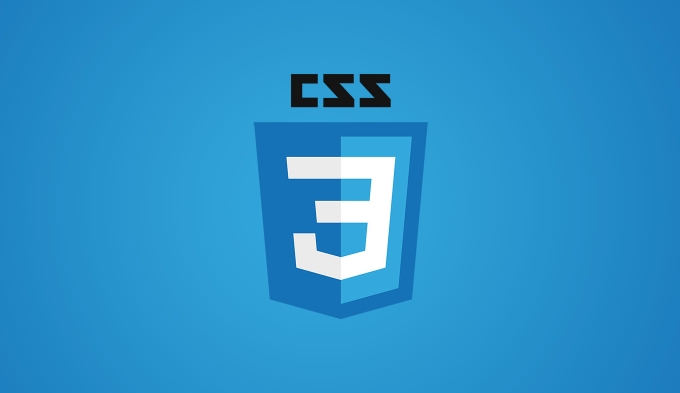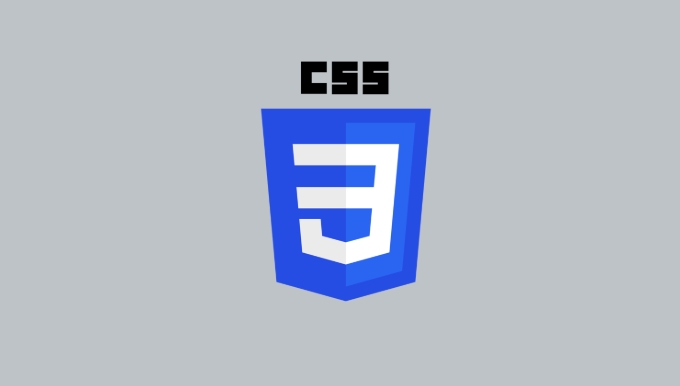How to create a responsive full-screen video background with CSS?
Aug 03, 2025 am 11:40 AMTo create a responsive full-screen video background, you need to use fixed positioning and object-fit properties to ensure that the video covers the entire viewport without distortion; 1. Use position: fixed to fix the video container to the viewport; 2. Maintain the aspect ratio of the video through object-fit: cover and cover the container; 3. Use z-index: -1 to place the video behind the content; 4. Add autoplay, muted, loop, and playsinline properties to support automatic playback; 5. Provide background images for mobile devices or slow connections as a downgrade solution; 6. Optimize the video file size and format to improve performance, and ultimately achieve cross-device compatible full-screen video background effects.

Creating a responsive full-screen video background with CSS is a common design choice for modern websites. The goal is to have the video cover the entire viewport, scale properly across devices, and not distort the aspect ratio. Here's how to do it effectively.

Use position: fixed or object-fit with proper contains
The most reliable way to achieve a full-screen video background is by using a dedicated <video></video> element and styling it so it fills the screen while maintaining its aspect ratio.
1. HTML Structure
<div class="video-background">
<video autoplay muted loop playsinline>
<source src="background-video.mp4" type="video/mp4">
Your browser does not support the video tag.
</video>
</div>
<div class="content">
<h1>Welcome to My Site</h1>
<p>This content is on top of the video.</p>
</div>2. CSS Styling
body, html {
margin: 0;
padding: 0;
height: 100%;
overflow: hidden; /* Prevent scrollbars */
font-family: Arial, sans-serif;
color: white;
}
.video-background {
position: fixed;
top: 0;
left: 0;
width: 100%;
height: 100%;
z-index: -1; /* Send video to the back */
overflow: hidden;
}
.video-background video {
position: absolute;
top: 50%;
left: 50%;
min-width: 100%;
min-height: 100%;
width: auto;
height: auto;
transform: translate(-50%, -50%);
object-fit: cover; /* Ensures the video covers the area without stretching */
}Key Points to Understand
-
object-fit: coveris cruel — it makes the video fill the container while preserving its aspect ratio, cropping if necessary. -
position: fixedon the container keeps the video locked to the viewport, even when scrolling. -
z-index: -1places the video behind other content, so your text or UI stays visible. -
transform: translate(-50%, -50%)centers the video perfectly. -
playsinlineis important for mobile Safari (iOS) to allow autoplay without full-screen mode.
Optional: Fallback for Slower Connections or Mobile
Some devices may not support video backgrounds well, or users may prefer reduced data usage.

/* Optional: Add a fallback background image */
.video-background::before {
content: '';
position: absolute;
top: 0;
left: 0;
width: 100%;
height: 100%;
background-image: url('fallback-image.jpg');
background-size: cover;
background-position: center;
z-index: -1;
}
.video-background video {
opacity: 0.8; /* Slight fade to improve text readability */
}Or, disable video on mobile via media queries:
@media (max-width: 768px) {
.video-background {
display: none;
}
body::before {
content: '';
position: fixed;
top: 0; left: 0;
width: 100%; height: 100%;
background: url('mobile-fallback.jpg') center/cover no-repeat;
z-index: -1;
}
}Performance & Autoplay Tips
- Keep video file size small — compress with tools like HandBrake.
- Use
.mp4with H.264 — best browser support. - Autoplay only works if muted — browsers block unmuted autoplay.
- Consider adding a "mute toggle" button for user control.
Basically, with object-fit: cover , proper positioning, and a few mobile considerations, you can have a sleep, responsive full-screen video background that works across devices. Just don't forget accessibility and performance.

The above is the detailed content of How to create a responsive full-screen video background with CSS?. For more information, please follow other related articles on the PHP Chinese website!

Hot AI Tools

Undress AI Tool
Undress images for free

Undresser.AI Undress
AI-powered app for creating realistic nude photos

AI Clothes Remover
Online AI tool for removing clothes from photos.

Clothoff.io
AI clothes remover

Video Face Swap
Swap faces in any video effortlessly with our completely free AI face swap tool!

Hot Article

Hot Tools

Notepad++7.3.1
Easy-to-use and free code editor

SublimeText3 Chinese version
Chinese version, very easy to use

Zend Studio 13.0.1
Powerful PHP integrated development environment

Dreamweaver CS6
Visual web development tools

SublimeText3 Mac version
God-level code editing software (SublimeText3)
 How to use PHP to build social sharing functions PHP sharing interface integration practice
Jul 25, 2025 pm 08:51 PM
How to use PHP to build social sharing functions PHP sharing interface integration practice
Jul 25, 2025 pm 08:51 PM
The core method of building social sharing functions in PHP is to dynamically generate sharing links that meet the requirements of each platform. 1. First get the current page or specified URL and article information; 2. Use urlencode to encode the parameters; 3. Splice and generate sharing links according to the protocols of each platform; 4. Display links on the front end for users to click and share; 5. Dynamically generate OG tags on the page to optimize sharing content display; 6. Be sure to escape user input to prevent XSS attacks. This method does not require complex authentication, has low maintenance costs, and is suitable for most content sharing needs.
 What are common CSS browser inconsistencies?
Jul 26, 2025 am 07:04 AM
What are common CSS browser inconsistencies?
Jul 26, 2025 am 07:04 AM
Different browsers have differences in CSS parsing, resulting in inconsistent display effects, mainly including the default style difference, box model calculation method, Flexbox and Grid layout support level, and inconsistent behavior of certain CSS attributes. 1. The default style processing is inconsistent. The solution is to use CSSReset or Normalize.css to unify the initial style; 2. The box model calculation method of the old version of IE is different. It is recommended to use box-sizing:border-box in a unified manner; 3. Flexbox and Grid perform differently in edge cases or in old versions. More tests and use Autoprefixer; 4. Some CSS attribute behaviors are inconsistent. CanIuse must be consulted and downgraded.
 Describe the `vertical-align` property and its typical use cases
Jul 26, 2025 am 07:35 AM
Describe the `vertical-align` property and its typical use cases
Jul 26, 2025 am 07:35 AM
Thevertical-alignpropertyinCSSalignsinlineortable-cellelementsvertically.1.Itadjustselementslikeimagesorforminputswithintextlinesusingvalueslikebaseline,middle,super,andsub.2.Intablecells,itcontrolscontentalignmentwithtop,middle,orbottomvalues,oftenu
 What is the accent-color property?
Jul 26, 2025 am 09:25 AM
What is the accent-color property?
Jul 26, 2025 am 09:25 AM
accent-color is an attribute used in CSS to customize the highlight colors of form elements such as checkboxes, radio buttons and sliders; 1. It directly changes the default color of the selected state of the form control, such as changing the blue check mark of the checkbox to red; 2. Supported elements include input boxes of type="checkbox", type="radio" and type="range"; 3. Using accent-color can avoid complex custom styles and extra DOM structures, and maintain native accessibility; 4. It is generally supported by modern browsers, and old browsers need to be downgraded; 5. Set accent-col
 How to compile SCSS to CSS?
Jul 27, 2025 am 01:58 AM
How to compile SCSS to CSS?
Jul 27, 2025 am 01:58 AM
InstallDartSassvianpmafterinstallingNode.jsusingnpminstall-gsass.2.CompileSCSStoCSSusingthecommandsassinput.scssoutput.css.3.Usesass--watchinput.scssoutput.csstoauto-compileonsave.4.Watchentirefolderswithsass--watchscss:css.5.Usepartialswith_prefixfo
 How to change text color in CSS?
Jul 27, 2025 am 04:25 AM
How to change text color in CSS?
Jul 27, 2025 am 04:25 AM
To change the text color in CSS, you need to use the color attribute; 1. Use the color attribute to set the text foreground color, supporting color names (such as red), hexadecimal codes (such as #ff0000), RGB values (such as rgb(255,0,0)), HSL values (such as hsl(0,100%,50%)), and RGBA or HSLA with transparency (such as rgba(255,0,0,0.5)); 2. You can apply colors to any element containing text, such as h1 to h6 titles, paragraph p, link a (note the color settings of different states of a:link, a:visited, a:hover, a:active), buttons, div, span, etc.; 3. Most
 How to purge unused CSS?
Jul 27, 2025 am 02:47 AM
How to purge unused CSS?
Jul 27, 2025 am 02:47 AM
UseautomatedtoolslikePurgeCSSorUnCSStoscanandremoveunusedCSS;2.IntegratepurgingintoyourbuildprocessviaWebpack,Vite,orTailwind’scontentconfiguration;3.AuditCSSusagewithChromeDevToolsCoveragetabbeforepurgingtoavoidremovingneededstyles;4.Safelistdynamic
 CSS transitions tutorial
Jul 26, 2025 am 09:30 AM
CSS transitions tutorial
Jul 26, 2025 am 09:30 AM
CSStransitionsenablesmoothpropertychangeswithminimalcode,idealforhovereffectsandinteractivefeedback.1.Usethesyntaxtransition:propertydurationtiming-functiondelay;todefinetransitions,liketransition:background-color0.3sease0.1s;.2.Specifytransition-pro






